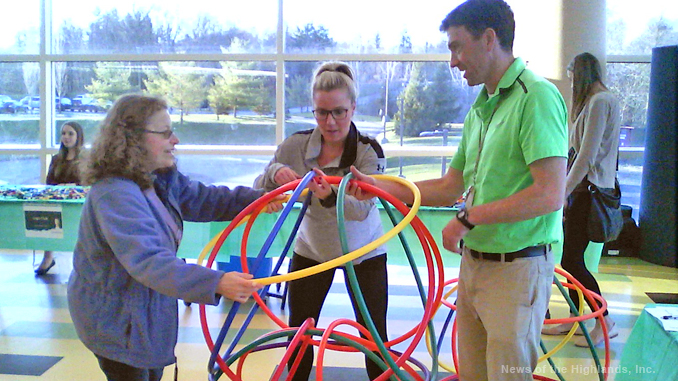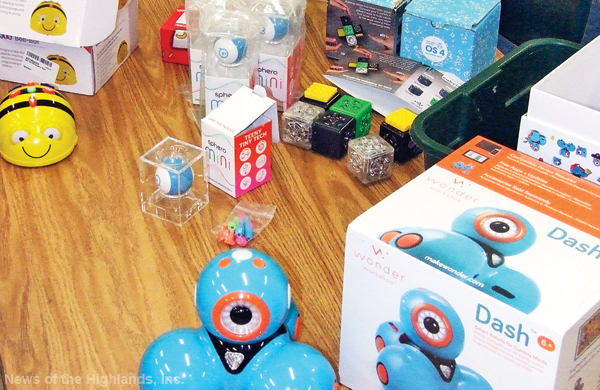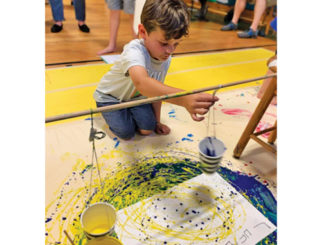
Four years ago, the first district-wide technology expo was hosted at Cornwall High School. With STEAM (Science, Technology, Engineering, Arts, and Mathematics) consistently being introduced over the past few years, this year’s expo morphed to become more inclusive of the acronym’s elements.
On April 10, the Fueling Our Future Expo was held and featured 34 stations exhibiting the work of teachers and students throughout the district.
While each of the stations portrayed an aspect of STEAM, another interesting observation was made. No matter the subject, the district has found a way to infuse STEAM into the curriculum.
Take physical education for example. One wouldn’t think dribbling a basketball or throwing a football would entail the use of STEAM, but Katelyn Marks and Michael St. Lawrence have found a way at the middle school. They created the Hula Hut.
While learning to work together as a team and using positive communication, students are challenged to build a hut using six hula hoops – four sides, a base, and a top. The game is “Hula Hut Knockdown.” Defenders must protect their huts from attack using their arms and hands to deflect or catch incoming “gator balls.” Meanwhile, Destroyers collect these balls from their territory and try to knock down the structures. Students are getting exercise while using engineering to construct their huts.
Meighan Fogarty’s second grade students at Cornwall Elementary School combined art, science, and technology for their Buzzing into STEAM exhibit.
First students had to learn about the parts of the insect from its six legs, antennae, head, thorax, abdomen, and stinger (except drones). Using Styrofoam and pipe cleaners they created bees and attached motors to simulate movement and their familiar buzzing sound.
Students in Hara-Ann Fiato’s high school art class used art and technology to create 3-D module sculptures with LED lights. Once the sculptures were complete, all that was needed to illuminate their projects were a three-volt battery and five-millimeter light emitting diodes.
Even English classes are finding a way to incorporate STEAM. Shannon Cameron’s fifth graders read “Land of Stories: The Wishing Well” and then used Chromebooks to create their own stories and write a one-page paper. Bringing engineering into play, students had to pretend to be architects and construct a house for the Three Little Pigs. Using toothpicks, their structures had to withstand wind, from a fan, and at least 20 grams of weight.


